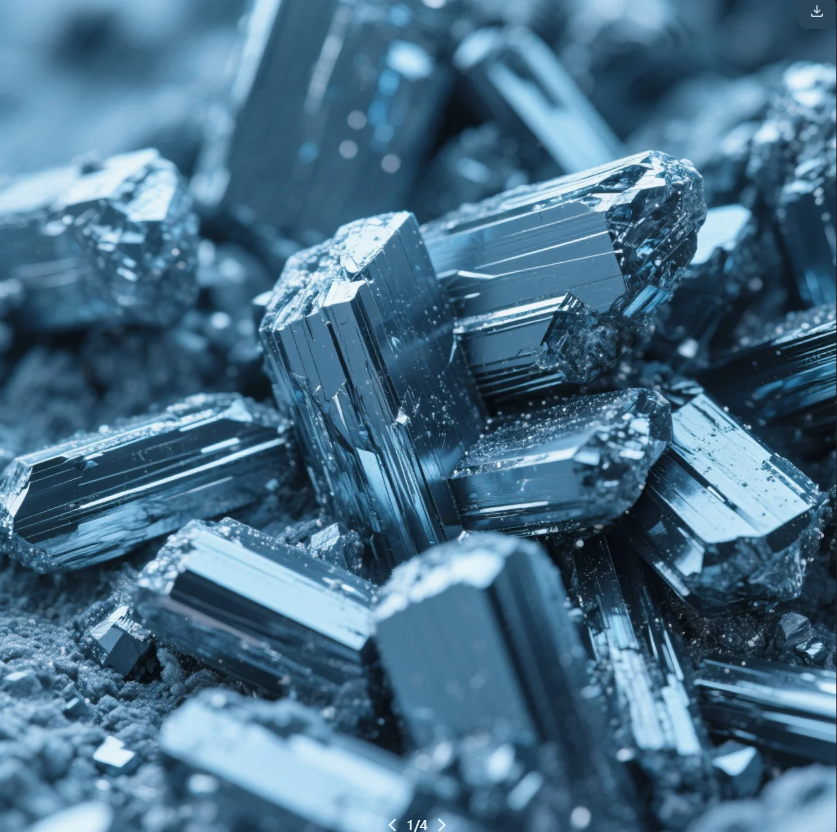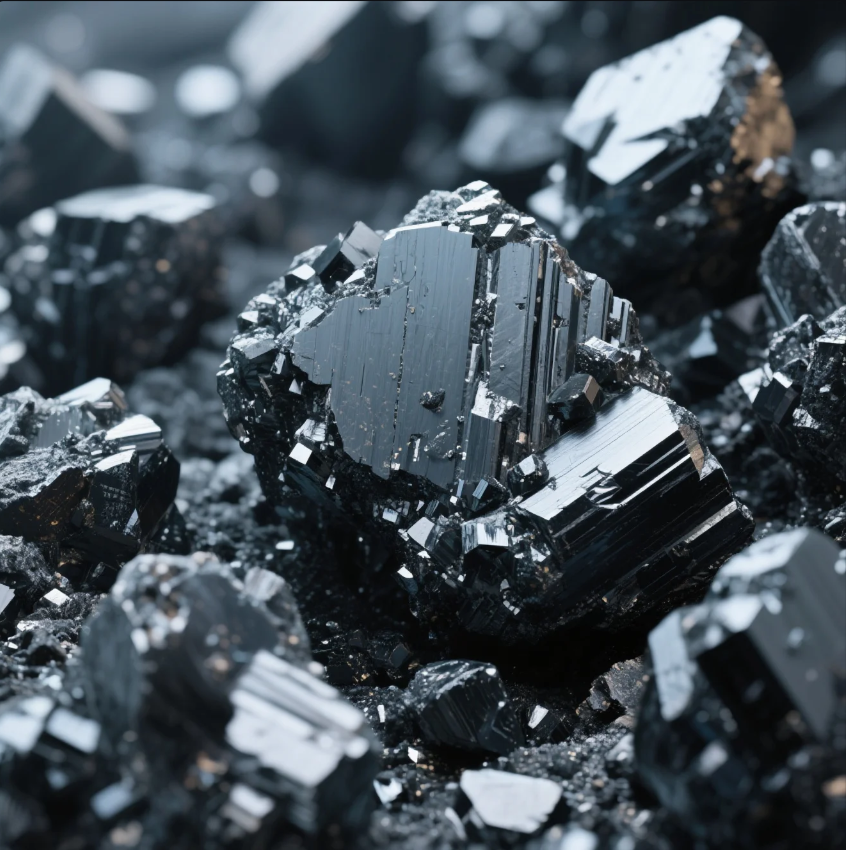Which 2 Minerals Contain Only Carbon?

Carbon is a fundamental element in the Earth’s crust, and it exists in many forms. Some minerals are composed entirely of carbon, offering unique properties that have significant applications in various industries. Understanding which minerals are made purely of carbon is essential for recognizing their uses and significance.
Snippet paragraph: Two minerals composed entirely of carbon are diamond and graphite, each with unique properties and uses.
Transition paragraph: Let’s explore the two minerals that contain only carbon and understand what makes them so special.
What Minerals Are Only Made of Carbon?
The two primary minerals made entirely of carbon are diamond and graphite. While both are composed purely of carbon atoms, they differ greatly in their structure and properties. Diamond is the hardest known natural material, prized for its brilliance and used in cutting tools and jewelry. Graphite, on the other hand, is soft, conductive, and used in applications like pencils, lubricants, and batteries.
Snippet paragraph: The two minerals made entirely of carbon are diamond and graphite, both of which have distinct characteristics.

Dive-Deeper paragraph:
Diamond and graphite are both composed solely of carbon atoms, but they have vastly different structures and properties. Diamond has a rigid, three-dimensional crystal structure where each carbon atom is bonded to four other carbon atoms in a tetrahedral arrangement. This structure makes diamond incredibly hard and transparent. In contrast, graphite has a layered structure, with carbon atoms bonded in flat, two-dimensional planes. These layers can slide over each other, which makes graphite soft and an excellent lubricant. Despite both minerals containing only carbon, their physical properties are determined by how the carbon atoms are arranged within their structures.
Pure Carbon Minerals
| Mineral | Structure | Key Properties |
|---|---|---|
| Diamond | 3D crystal lattice | Hardest known material, transparent |
| Graphite | Layered, 2D arrangement | Soft, conductive, used in pencils |
What Minerals Are Pure Carbon?
Diamond and graphite are the two main pure carbon minerals. While both minerals are made entirely of carbon, they exhibit very different behaviors due to their structural arrangements. Diamond is formed under high-pressure conditions deep within the Earth, while graphite forms at lower pressures, typically in metamorphic rocks. Despite being chemically identical, their properties differ dramatically because of how the carbon atoms are bonded together.
Snippet paragraph: Diamond and graphite are the pure carbon minerals, differing greatly in structure and properties despite being made of the same element.
Dive-Deeper paragraph:
Both diamond and graphite are allotropes of carbon, meaning they are different forms of the same element, but with distinct atomic arrangements. Diamond is formed under extreme heat and pressure deep in the Earth's mantle, where carbon atoms bond in a three-dimensional lattice. This arrangement gives diamond its remarkable hardness and optical properties. Graphite, on the other hand, forms under conditions that are less extreme, often found in metamorphic rocks. In graphite, carbon atoms are bonded in flat layers, each bonded to three other carbon atoms. These layers can easily slide past one another, making graphite a great material for applications that require lubrication.
Carbon-Based Minerals
| Mineral | Structure | Formation Conditions |
|---|---|---|
| Diamond | 3D crystal lattice | Formed under high pressure and temperature |
| Graphite | Layered, 2D arrangement | Forms under lower pressures in metamorphic rocks |
What Are Carbon Minerals?
Carbon minerals are minerals that contain carbon as part of their chemical composition. While diamond and graphite are pure carbon minerals, there are also other minerals that contain carbon as part of a compound, such as calcite (CaCO3) and limestone. However, diamond and graphite are unique because they are made entirely of carbon.
Snippet paragraph: Carbon minerals are those containing carbon, but diamond and graphite are unique as they are made entirely of carbon.

Dive-Deeper paragraph:
While many minerals contain carbon as part of their structure (such as calcite, which contains carbon in the form of carbonate), diamond and graphite are the only two minerals made entirely of carbon. Calcite and other carbon-containing minerals like limestone (CaCO3) are examples of carbonate minerals, where carbon is combined with other elements like calcium or magnesium. However, these are chemically distinct from pure carbon minerals like diamond and graphite, where carbon atoms themselves are the only building blocks of the mineral's structure.
Carbon and Carbonate Minerals
| Mineral | Composition | Key Properties |
|---|---|---|
| Diamond | Pure Carbon | Hardest known material, transparent |
| Graphite | Pure Carbon | Soft, conductive, used in pencils |
| Calcite | CaCO3 (Carbonate) | Forms in sedimentary environments |
| Limestone | CaCO3 (Carbonate) | Used in construction, forms in water |
Do Some Minerals Contain Carbon?
Yes, many minerals contain carbon, but not all of them are made entirely of carbon. Diamond and graphite are the two most famous minerals composed purely of carbon. However, there are many other carbon-containing minerals that combine carbon with other elements. For example, calcite and limestone both contain carbon in the form of a carbonate group (CO3), but they are not made entirely of carbon.
Snippet paragraph: Many minerals contain carbon, but only diamond and graphite are made entirely of carbon.
Dive-Deeper paragraph:
Carbon-containing minerals are quite common, especially carbonates, where carbon is bonded to other elements like calcium or magnesium. These minerals form in a variety of geological settings, from sedimentary deposits to metamorphic rocks. Diamond and graphite, however, are the only minerals where carbon alone forms the mineral. The presence of carbon in other minerals often comes in the form of the carbonate ion (CO3), which is a group of carbon and oxygen atoms bonded together, as seen in calcite (CaCO3) or dolomite (CaMg(CO3)2). These minerals, while containing carbon, are chemically distinct from pure carbon minerals like diamond and graphite.
Carbon and Carbonate Minerals Comparison
| Mineral | Carbon Content | Chemical Formula | Type |
|---|---|---|---|
| Diamond | 100% Carbon | C | Pure Carbon |
| Graphite | 100% Carbon | C | Pure Carbon |
| Calcite | Carbon in Carbonate | CaCO3 | Carbonate Mineral |
| Limestone | Carbon in Carbonate | CaCO3 | Carbonate Mineral |
Conclusion
The two minerals that contain only carbon are diamond and graphite, each possessing unique properties due to the different ways their carbon atoms are arranged. While other minerals contain carbon as part of a compound, diamond and graphite stand out as pure carbon minerals, each with essential uses in various industries.







